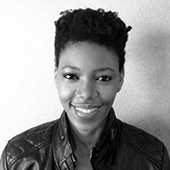Still, there are a couple of things UX design professionals do agree on: design is good, design is essential, and people should benefit positively from their interaction with any design. So I began to focus on what people actually do rather than what their title says, because titles don’t get design done, people do.
Parallels Between Sustainability and User Experience
Not long afterward, I started an internship at an agency that focused mainly on sustainability and corporate communications. The digital team, of which I was a part, got to attend an in-house training on sustainability to gain a better understanding of why it is the company’s focus and how the work of other teams fits into that overall goal. As the talk progressed, I began to see clear parallels between sustainability and user experience. It was as though they were interwoven with one another. This helped me to appreciate the importance of UX professionals much more, the areas we ought to occupy, and the roles we need to play. But this had nothing to do with titles.
Sustainability, like user experience, is an important aspect of our lives that society has neglected for decades. Both people and companies are beginning to realize how necessary it is to focus on these elements. But when we look at them in a corporate context, sustainability and user experience are functions that should neither be stand-alone organizations nor run as add-ons. We must embed them into a company’s ethos, values, and actions. This, in turn, creates the need to have certain people to take on the responsibility of overseeing, directing, and managing these elements. In forward-thinking organizations, sustainability officers and UX professionals take on these responsibilities.
More important, given that these two elements have just begun to get traction, there are strategic roles that every sustainability officer and UX professional ought to play—regardless of their titles or how or where they are employed. One person need not take on all of these roles, but each of us should play at least one of these roles to which he or she is well suited. The roles and responsibilities sustainability and user experience share include the following:
- educator
- innovator
- disruptor
- partner
Educator
Every one of us goes through some form of education, whether informal or formal, and we can all agree on the importance of education. We should target education on user experience toward both UX professionals and those outside the profession. The responsibilities of the Educator role include mentorship within the UX profession, writing, and speaking at conferences. The more people learn about user experience, the more likely they are to change their mindsets toward it.
I have benefitted immensely from being educated through mentorships, workshops, and the articles I’ve read. I have also seen companies implement education internally. At the end of each week, the UX team or others would give a presentation to other teams about the projects they had worked on, some of the key activities they had taken part in, and how they related to every other team and the company’s bottom line. Educational activities need not be elaborate. The Educator role is one that almost anyone with a passion for user experience can take on.
